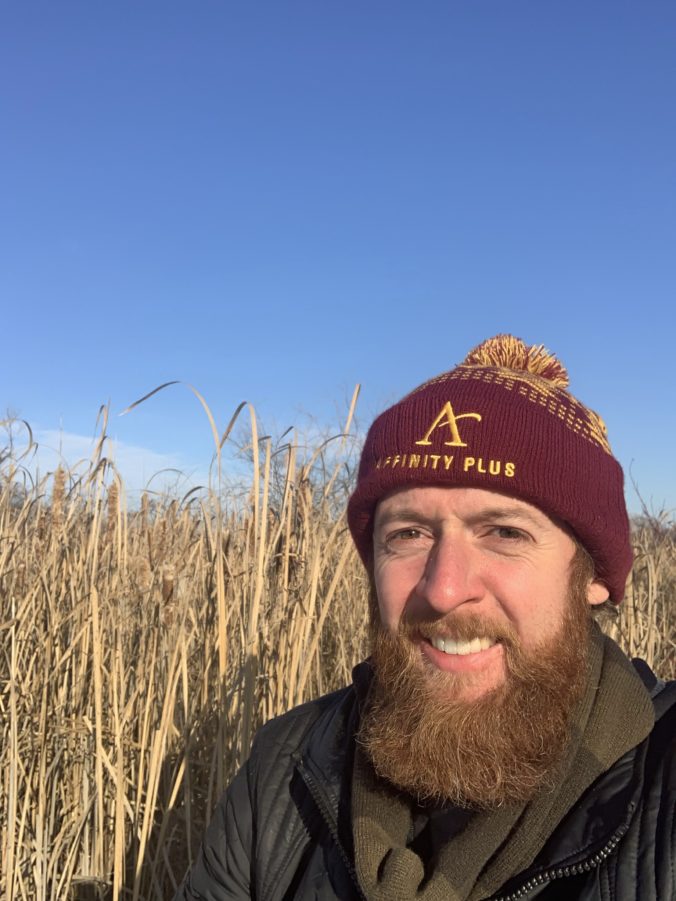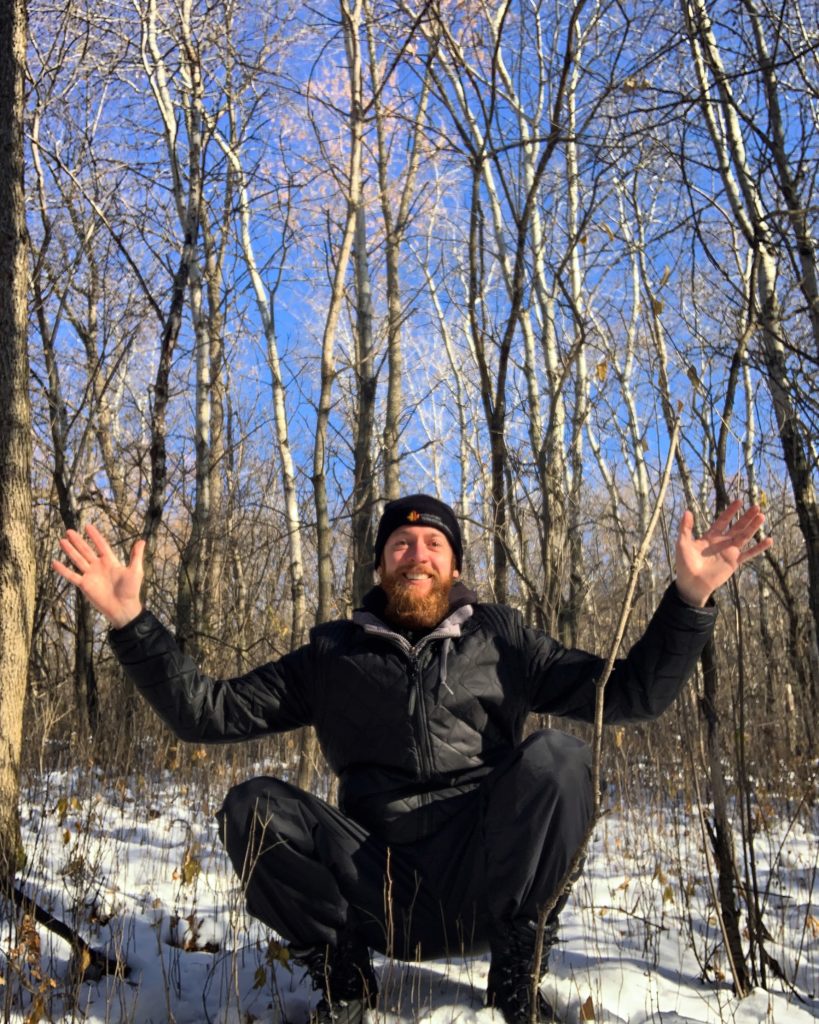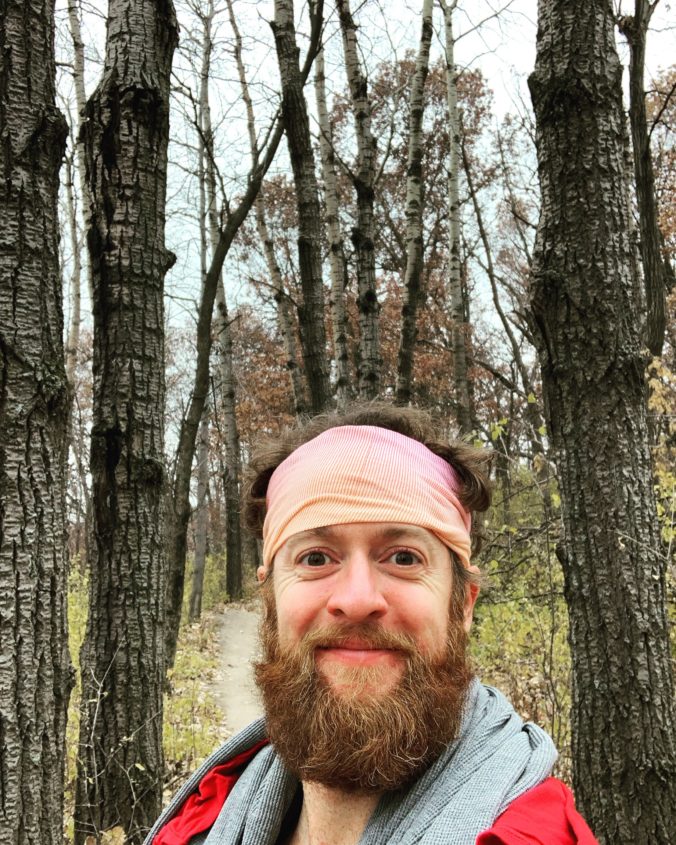I kicked off this week by making a brand new recipe for my beloved Kristyn’s birthday.
Our favorite restaurant in the Twin Cities is Bar La Grassa. It’s a hip Italian joint in the trendy North Loop neighborhood in Downtown Minneapolis, and everything about this place is spectacular: the craft cocktails, the entire menu section dedicated to bruschetta, the mouth-watering entrees, the housemade pasta… it’s all just so damned good. Kristyn has enjoyed their Gnocchi with Cauliflower & Orange in the past, and our neighbor so graciously mentioned that she’d found this recipe from a Minnesota food blogger who created a make-at-home version.
And so, in a fashion not unlike one of our first dates, where I first had Kristyn over to my place and made her fettuccine alfredo, I rolled up my sleeves and did my best Bar La Grassa impression, gnocchi-style, complete with a couple of bourbon old fashioned’s.
The dish turned out absolutely delectable. What really stood out about this evening, though, was not the lip-smacking tastiness of my concoction, but instead it was the deliciousness of the vibe we created in our home. Italian guitar strumming through the speaker. Candles flickering on the table. Cabernet in our glasses. Our kids were so into the peacefulness of the setting that, when we were done eating, they allowed Kristyn and I the space and time to slow dance in our family room while they busied themselves with their winter capes we’d just dug out of storage. It was a Monday evening as parents in the suburbs, but it felt like a Friday night on the town. These little touches made the evening feel special, indulgent. Even though it was my life, it felt like I had entered a nicer, higher plane of existence reserved for celebrities and royalty. It was an ordinary Monday made extraordinary with the addition of just two potent ingredients: effort and novelty. That’s really all it takes to keep life spicy. We can induce the pleasure of novelty simply by applying a little effort to find or create newness with the things we already have.
Side note: if you try to make the Cauliflower Gnocchi recipe (which I heartily encourage you to do), use two pans, not one, so you can sauté the gnocchi separate from the cauliflower and shallot, and double the butter. I audibled both of these decisions while making it, and was very happy with both of those choices.
THE FORMULA OF NON-FICTION BOOKS
This week I finished Gretchen Rubin’s book Better Than Before, a book about habits. I’m very curious about the power of habits, and this book offers a multitude of insights on the topic. One of the bigger takeaways of the book is that habit formation is an individual endeavor and that one approach will not work for everyone. We each have different tendencies (based on our life experiences and genetic dispositions), and only based on our unique tendencies (such as how we respond to inner expectations versus external expectations) will a particular approach to habit creation be successful.
One of the habits I’m forming with fairly reasonable success is to take notes of books (and podcasts) as I consume them. Rather than reading an educational book or listening to an insightful conversation and then letting the knowledge slip out of my mind as I make room for the next content, I slow down and take notes I can reference later. Of course, the process of writing the notes down is often enough to cement the idea into my brain more permanently. These notes sometimes turn into mini book reports that I publish on this blog, like The Most Important Lessons from “10% Happier” or Lessons From “Into The Wild” by Jon Krakauer.
As I was wrapping up my notes on Better Than Before, I noticed a pattern, a sort of formula with books, specifically non-fiction books in the self-improvement realm. The formula goes like this:
Pick a topic you’re curious about –>
Research the crap out of it, which includes: reading tons, talking to friends, and interviewing experts –>
Document everything as it unfolds –>
Observe connections or patterns that emerge –>
Map out or define these connections or patterns in some sort of diagram, flow chart, table, list, or framework, and –>
BOOM, there’s your book
(Plus, you know, writing 50,000 or 100,000 words in a compelling, expertly crafted, and easy to digest way)
While it may sound a bit obvious (as I read what I just wrote above), this noticing felt like a revelation to me. All of these self-improvement books I’m reading share a common thread – they all have their own sort of framework that the author has “created” (although some authors note they haven’t created anything per se, they have simply noticed and documented something that was already there). In Katy Bowman’s book Move Your DNA, she shares a Venn Diagram she created with a large circle titled “Movement” and within it, a smaller circle labeled “Exercise,” explaining the paradigm embedded in the book’s thesis–we are too focused on exercise routines and are ignoring the much larger picture of body movement that affects every cell in our body every moment of every day. In Stephen Covey’s The 7 Habits of Highly Effective People, the framework he put together is so obvious it’s the title of the book!
In the case of Better Than Before, one of Rubin’s frameworks is the Four Tendencies, where she groups every person into one of four buckets, based on how they respond to inner and outer expectations: Upholder (serves inner and outer), Questioner (serves inner, rejects outer), Obliger (serves outer, rejects inner), and Rebel (rejects inner and outer). She capitalizes each of these tendencies as if they are proper nouns with the same credibility and “properness” as Christmas or Egypt, even though this idea of labeling these tendencies was just a notion she came up with during the research phase of this writing project. Yet, as a reader, I noticed myself reading these labels and this framework as truth, as fact; a smart person wrote this well-researched book and is capitalizing these terms, so this must be the way things are.

Noticing patterns and creating useful frameworks and lenses to view the world through is the helpful work authors contribute to the world. It’s what transforms an idea into a useful idea. It’s what takes reams of research and converts the findings into something one can internalize. I feel like I have now noticed a pattern in how authors notice patterns, and it feels like I’ve just accessed a cheat code on how to write a useful book.
Now the question is–do I have the courage and the discipline to play the game in which I can use my new cheat code?
MONITORING MY BEHAVIORS
When I started training for a marathon in 2020, I stole an idea I’d seen a friend posting about on Facebook; I created a simple spreadsheet to track how many miles I ran every day. I also used the Nike Run Club app to track my miles, but apps come and go (I’ve since switched to Strava), but no matter what mile tracker app I use, my spreadsheet never changes. I found tracking my miles in this way to be extremely useful and also rather enjoyable. I’m not claiming this method will work for everyone, because not everyone shares my tendencies, but I really enjoyed having a numerical and visual account of how my weekly and monthly mileages were progressing. I was motivated by beating my previous week and by seeing my monthly miles stack up over time. I don’t know if I would have been able to complete a marathon without this system of monitoring my quantitative progress.
This week, I returned to this idea, except I’m no longer training for a marathon. Instead, I’ve started tracking other behaviors, other practices I have decided are the practices that align with my values, that I believe in, that I want to hold myself accountable to practicing on a weekly basis. I created two separate worksheets: Mind and Body. For both of these, I’ve decided to use the measurement unit of minutes–the number of minutes I spend doing the practice each day.
On the Mind worksheet, I’m tracking: Meditation, Spanish, and Music. I considered adding Writing, because it is a Mind exercise I’m deeply interested in practicing, but I’m jotting down notes so often throughout the day, it would be too cumbersome to track.
On the Body worksheet, I’m tracking: Strength, Cardio, Yoga, and Being Outside. I’m not training for any particular physical endeavor. I am interested in developing a body that is well-adapted to a natural life over the long term, minimizing potential for injuries and maximizing healthy longevity. With what I’ve been learning about the body and movement from people like Tony Riddle and Katy Bowman, I believe that a variety of movement practices is the key to achieving my body goals, so I’ve set up a rotation of dedicated exercise practice six days a week with the following cadence: Strength, Yoga, Cardio, Strength, Yoga, Cardio, Rest. I included Being Outside on my Body tracker, because it is just so freaking nourishing to be outside, so regardless of whether I’m running, walking, hiking, playing with my kids, or sitting under a tree, I’m going to monitor how many of my daily minutes I’m spending immersed in nature.
Time is our most limited resource. What gets monitored gets done. My intention is that by monitoring the behaviors I most want to develop into habits, I’ll have the same excitement and motivation that I did when tracking marathon miles, and eventually I’ll be living a life in perfect harmony with my aspirations. (At which point, I’ll probably change the goals again, ha!)
Probably not so coincidentally, as soon as I finished making this tracker, I felt compelled to go for a walk outside. I hiked around the trails at Westwood Nature Center in St. Louis Park, MN, and it felt invigorating. It was a cold day. I saw two other humans. I saw many deer hunkered down, turkeys squabbling, squirrels scavenging acorns, and pileated woodpeckers hacking away to prepare for winter. I felt more alive being in the midst of all these creatures working hard at their own survival.
THANK YOU TO WRITERS
This week I also started and finished the book The Year of Less by Cait Flanders, a memoir in which Flanders shares her journey of detaching from the habit of mindless shopping and consumerism. I’ve always been skeptical when people would claim to finish a book in a day or three. I’m a slow reader. But this book was a fast one for me. Upon finishing it, I felt compelled to send Cait a quick email. I wanted to thank her for writing the book, to thank her for the value I got from it (I hadn’t really considered making “internet friends” with similar interests until she mentioned meaningful relationships she’d made that way), and, more than that, I wanted to share how I related to her on several levels, to lob a hook into the water that I feel like a kindred spirit and am open to connecting more deeply than as just a reader of her book.
I then remembered hearing Dan Harris share on his podcast that one of the ways he first got into relationship with Dr. Mark Epstein was by reading his book and then reaching out to Epstein to set up a call, which Epstein agreed to.
Eureka! This gave me the idea to write the author of every book I read, as long as they are living, and thank them for the book. I don’t necessarily aspire to meet and become friends with all of these others, but as someone who’s dabbling in this whole writing business, I know how hard it is to put words down, so the very least I can do is to thank them for their effort. It feels karmically right. Plus, I’ve been in sales my whole career. I know how to do successful cold outreach, and that’s when I was peddling every business owner’s least favorite expense–advertising. It can’t be harder to write someone a thank you note. What’s the worst that can happen?
I started this new gratitude practice with Cait Flanders, and I’m looking forward to continuing this tiny way of giving back to my writer teachers out there.












